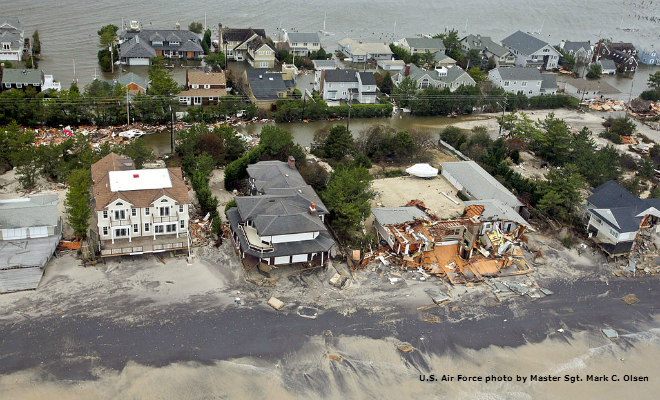New Jersey Future Blog
Smart Growth Produces Economic Benefits Across the Country
December 2nd, 2010 by Jay Corbalis
- By 2025, the demand for attached and small-lot housing nationwide will exceed the current supply by 35 million units (71 percent), while demand for large-lot housing will fall short of current supply. (Journal of the American Planning Association, 2006)
- Households in auto-dependent neighborhoods spend 25 percent of their income on transportation, while households with good transit access spend only 9 percent. (Reconnecting America, 2007)
- Major employers are choosing to relocate in central cities near transit. Blockbuster Entertainment cited the Dallas Area Rapid Transit as a key factor in establishing its headquarters in the city’s central business district; software company Fast Enterprises chose a location near a transit stop in downtown Denver for its headquarters; United Airlines moved its operational headquarters from suburban Elk Grove to downtown Chicago; and Quicken Loans moved 1,700 of its employees to downtown Detroit.
Growing in the Right Places Saves Money — and Makes Money
Though economists tell us the country is slowly recovering from the most severe economic downturn since the Great Depression, the impacts are still felt widely. Government at all levels is particularly hard-hit, looking for ways to balance budgets in the face of reduced revenues and growing demand for services. In this economic climate, it is important to remember then that how and where we develop can have major economic consequences.
Smart Growth America, a coalition of national, state and local organizations (including New Jersey Future) working to improve the ways we plan and build towns, cities and metro areas, has gathered a compendium of studies that quantify the many ways in which smart growth not only saves money but makes money.
Smart Growth Saves Money
Public expenditures can be reduced when development and redevelopment take place in or adjacent to existing cities, towns and villages; when neighborhoods offer a mix of uses and a compact pattern to support more economic and social activity; and when roads and public spaces are designed to support convenient transportation choices. These smart growth strategies, compared to the status quo, allow services to be provided at a lower cost; reduce construction costs; reduce maintenance costs by directing spending to existing infrastructure; reduce the tax burden by maximizing return on public investment; preserve existing communities; reduce household transportation costs; and lower health costs.
For example, the Transportation Research Board reports that shifting roughly 25 percent of projected low-density growth to more compact development would result in a national savings of $4.2 billion for roads, water and sewer operations and maintenance, over a 25-year period.
In water and sewer costs alone, the Journal of the American Planning Association concludes that for low-density, large-lot development, each additional mile from city center adds roughly $122,000 to the 30-year cost of providing water and sewer services, while for compact, small-lot development, each mile adds only $50,000. Other services, including fire and rescue, police, schools, libraries and parks, also require upfront infrastructure expenditures, which can be significantly more expensive for sprawling communities than for more compact ones.
Smart Growth Makes Money
The same smart growth strategies that save public dollars also promote economic growth by encouraging private investment; attracting employers and workers; supporting small businesses; improving access to jobs; increasing property values; providing greater stability in times of economic uncertainty and rising energy costs; and responding to demographic shifts.
In New Jersey, for example, property values shot up near train stations that benefited from NJ Transit’s Midtown Direct service. The Hudson-Bergen Light Rail line has led to the construction of more than 10,000 units of new housing, worth $5.3 billion, in five station areas. A 2009 briefing paper issued by Smart Growth America and the University of Utah reported price premiums of properties located within a half-mile radius of rail transit stations in seven major metropolitan areas ranged from 6 percent (Philadelphia) to 20 percent (Chicago) to 45 percent (San Jose).
Investment in infrastructure that supports smart growth creates more jobs than spending that encourages sprawl. In a 2009 analysis of the economic impact of infrastructure investment, researchers at the University of Massachusetts found that government spending on repair work on roads and bridges generates 16 percent more jobs than the same investment in new bridge and road construction. The same research showed that investment in mass transit generates 31 percent more jobs than new road and bridge construction.
“The economic benefits of smart growth are broad and deep,” Smart Growth America concludes. “The experience of communities across the country, urban to rural, shows that smart growth directly reduces public costs, improves rates of return for public and private investors, and avoids the expensive environmental, health and social equity costs of sprawl.”
















[…] See the website for more info. For an example for how to put this information to work, check out New Jersey Future’s blog. SGA Updates, Uncategorized « Today’s Links Under Pressure: New […]